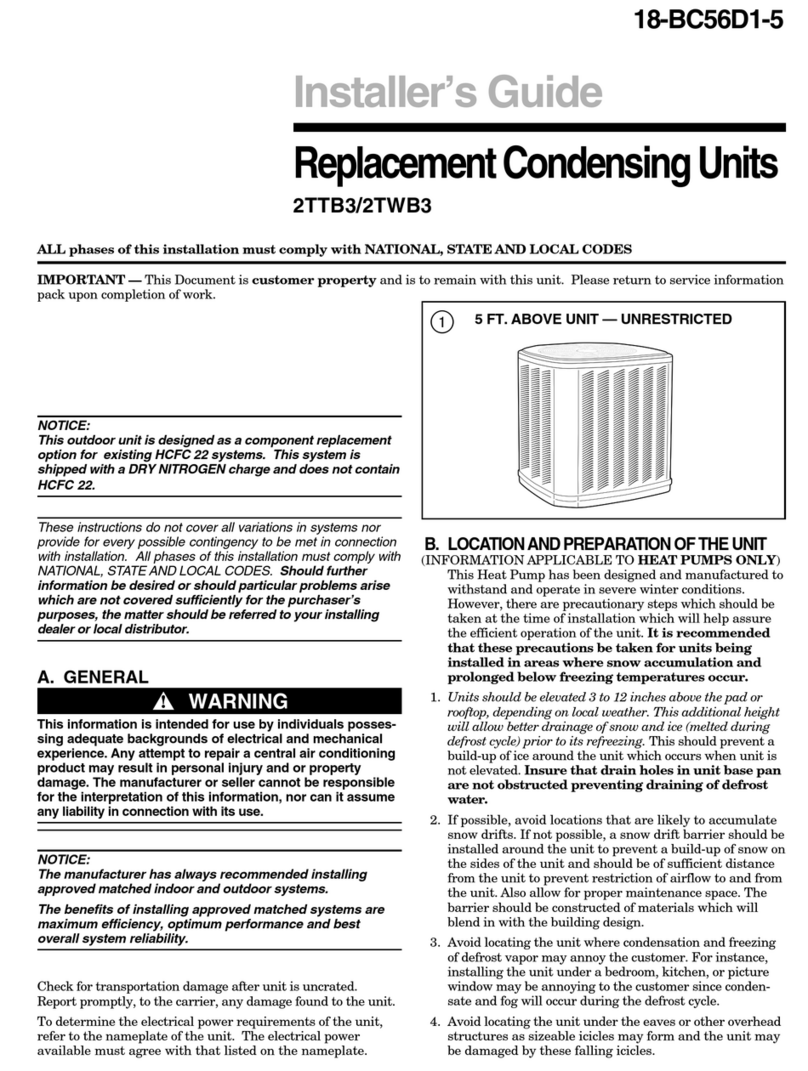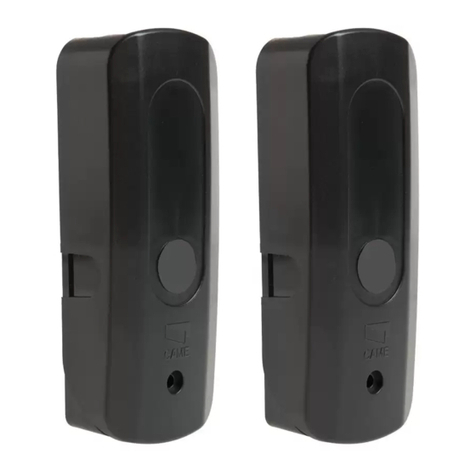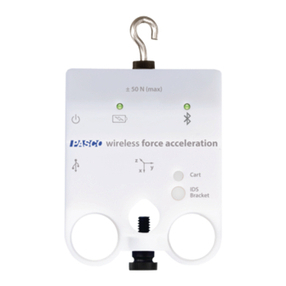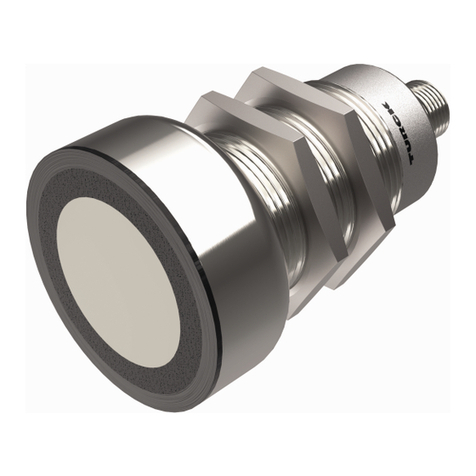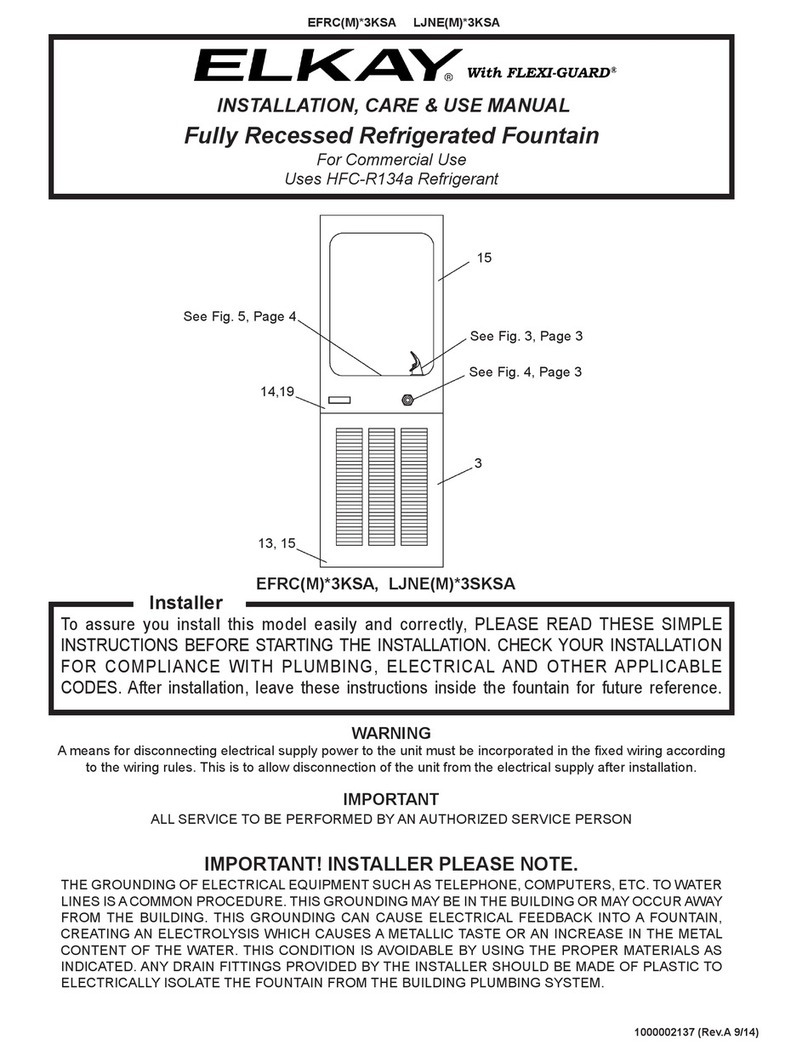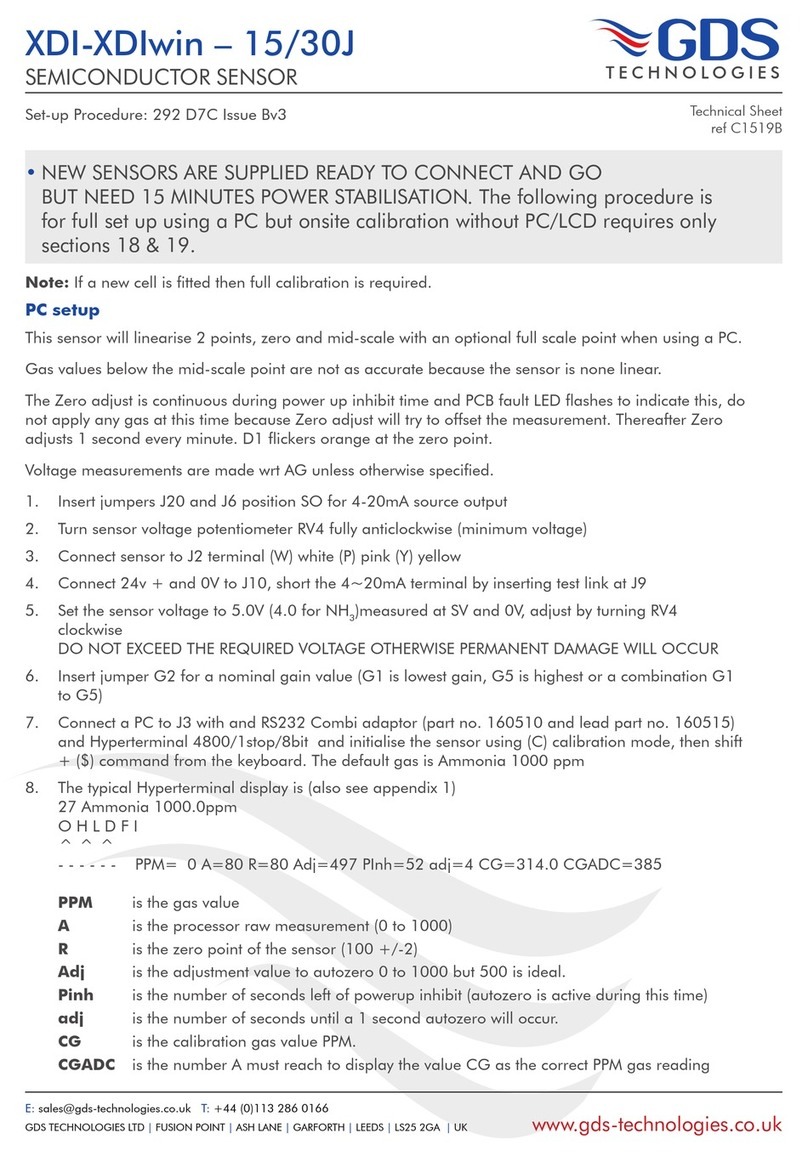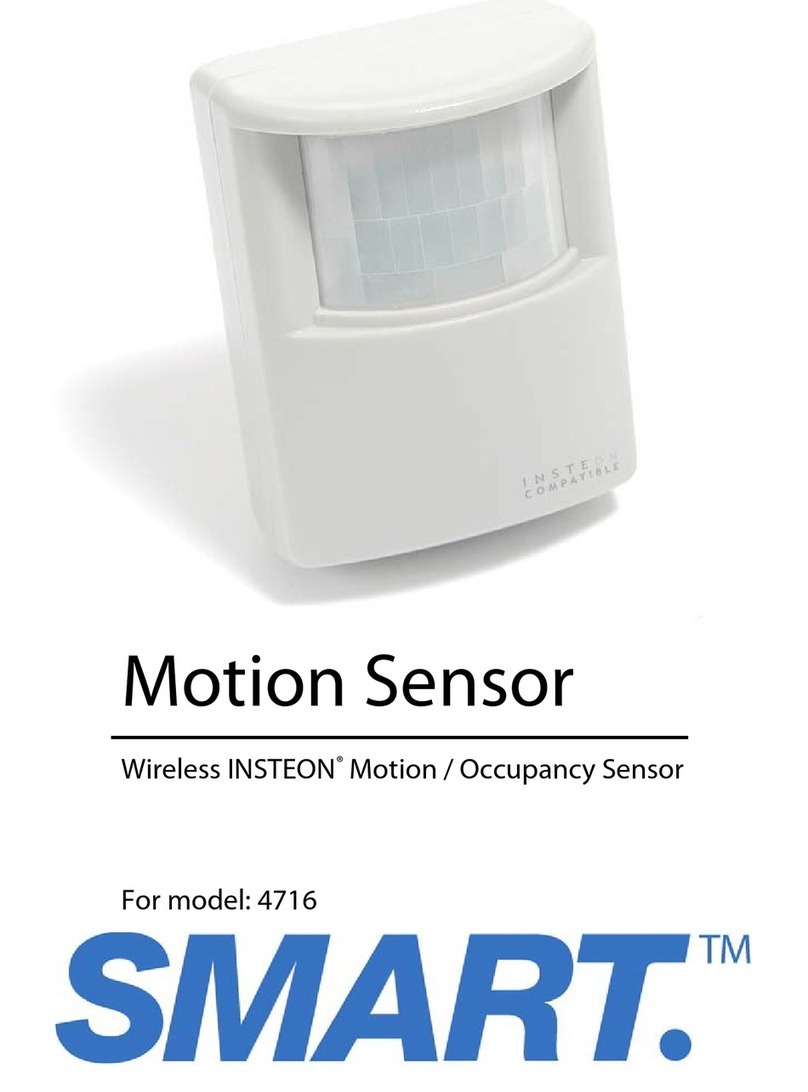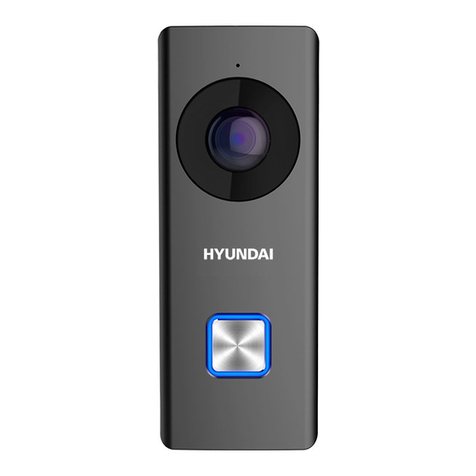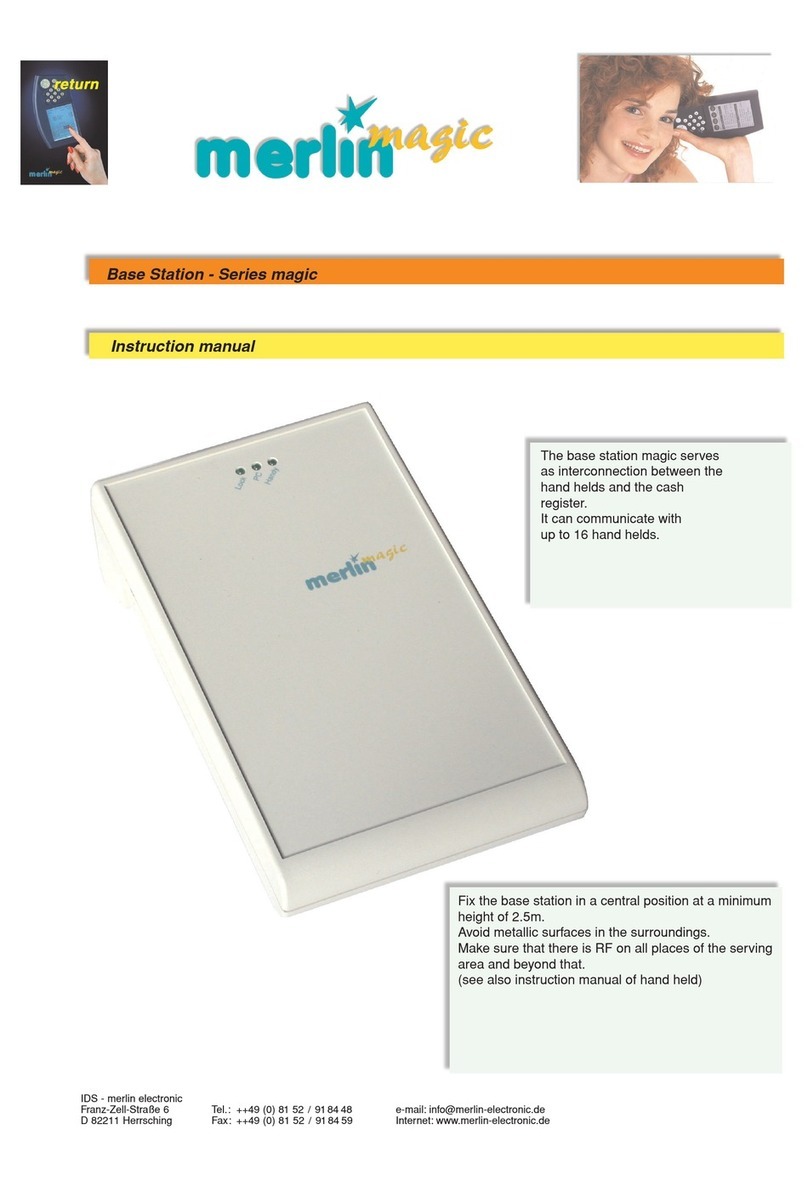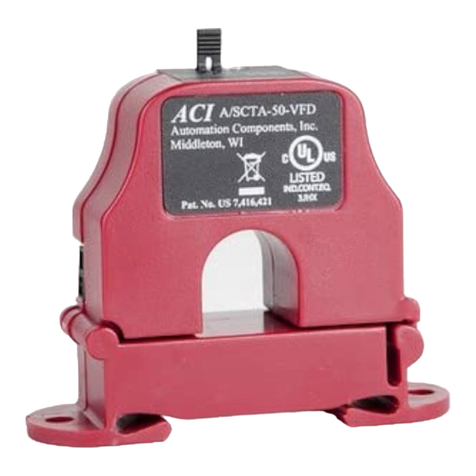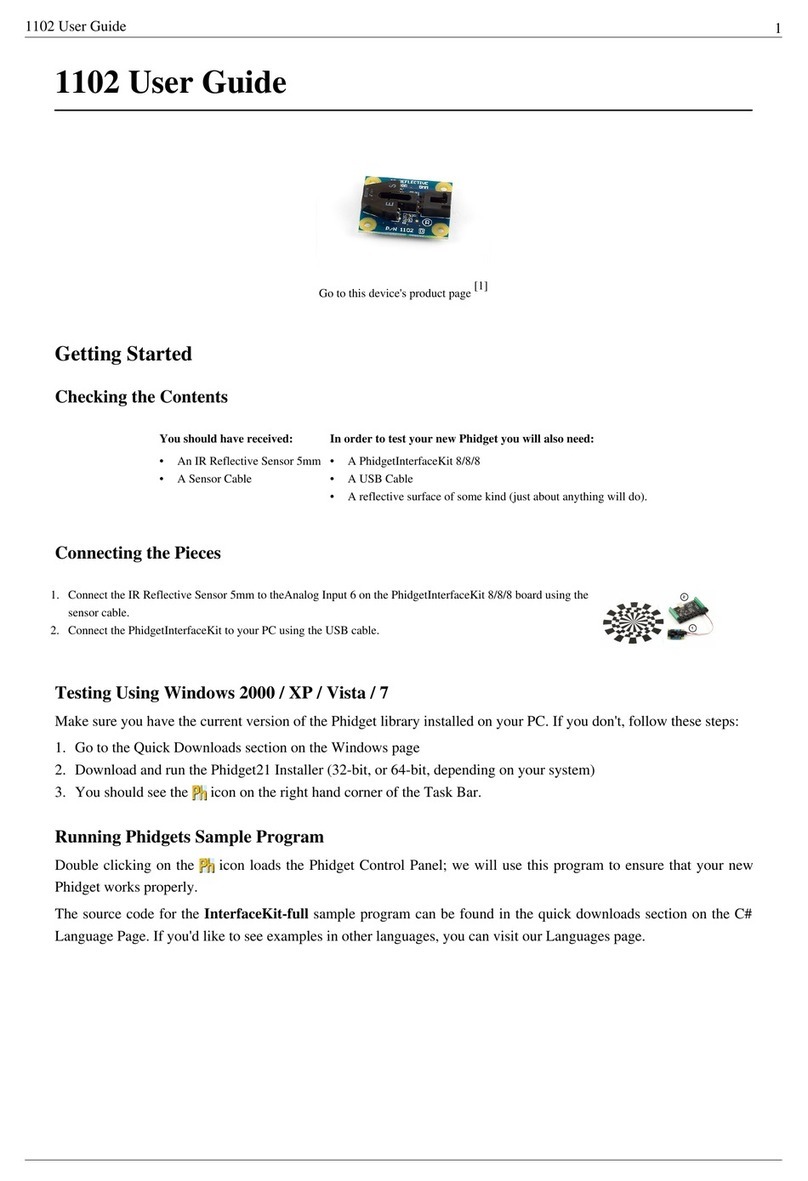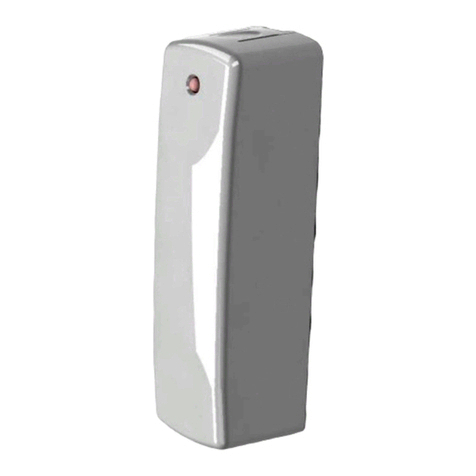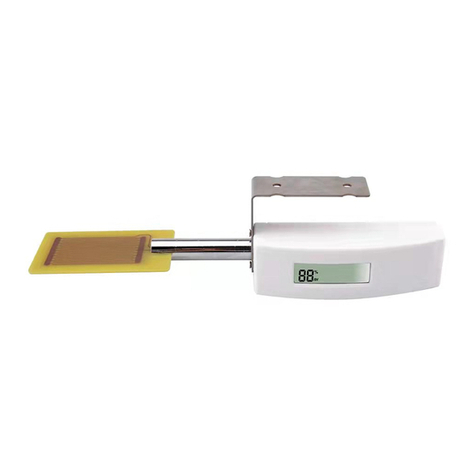GEORGE FISCHER +GF+ SIGNET 2550 User manual

GEORGE FISCHER +GF+
+GF+SIGNET 2550 Insertion Magmeter
Instruction Manual

CAUTION: Do not remove from pressurized lines!
Do not remove safety ring from sensor. Unit may
become a dangerous projectile if safety devices
are disabled.
Do not open wiring access plate in humid
environment. Moisture in terminal area may cause
instrument failure.
In EDIT mode, all the output functions of the
+GF+SIGNET 2550 Insertion Magmeter are still
active, so the control process is uninterrupted.
The +GF+SIGNET 2550 Insertion Magmeter
weighs 11 lbs. Care must be taken to properly
support the unit with straps and/or bracing when
necessary.
Important Safety Information!

Page
1
1
2
2
2
3
4
5
6
7
8
8
9
10
10
11
12
13
14
14
15
16
16
17
18
18
19
20
20
20
23
24
25
28
Chapter 1
Introduction
1.1 Description
Chapter 2
Installation and wiring
2.1 Sensor location
2.2 Preparing the pipe
2.3 Sensor installation with tool
2.4 Sensor installation without tool
2.5 Wiring
2.6 Grounding requirements
2.7 Installation tips
Chapter 3
Operation
3.1 Control panel description
3.2 Main menu
3.2.1 Access code
3.3 Calibrate functions
3.3.1 Unit
3.3.2 Interior diameter
3.3.3 Current output
3.4 Performance functions
3.4.1 Sensitivity
3.4.2 Response time
3.4.3 Viscosity
3.4.4 AC noise filter
3.4.5 Calibration "B"
3.5 Display options
3.5.1 Operational outputs
3.5.2 Diagnostic displays
3.6 Frequency output
3.6.1 Product compatibility
3.7 Calibration data
3.8 Custom K-factor calculation
3.9 Spare parts list
Specifications
Warranty Information
Table of Contents

Unpacking and Inspection
The +GF+SIGNET 2550 Insertion Magmeter
package includes the following items:
• 3-2550.100 sensor
• 3-2550.090 instruction manual
• 3-2550.355 installation tool (optional)
Please fill out and return the warranty card as soon
as possible.
The technical information
given in this manual is for
general information only.
It implies no warranty of any
kind.
Warranty record
For your protection, record the purchase
information for future reference. The serial number
decal is located on the sensor, and also inside the
wiring access plate.
Model: +GF+SIGNET 2550 Insertion
Magmeter
Purchase date:________________________
Serial number:________________________
Purchased from:_______________________
Purchase order number:________________

1
Chapter 1
Introduction
This manual contains descriptions, specifications,
and instructions for the installation and operation of
the +GF+SIGNET 2550 Insertion Magmeter.
Should you require further assistance, please
contact your Signet supplier.
1.1 Description
The latest in bipolar pulsed DC technology and the
best features of an insertion sensor are packed into
the +GF+SIGNET 2550 Insertion Magmeter.
Simple installation, easy maintenance, and
state-of-the-art microprocessor technology make the
2550 the best alternative to traditional full-line
magmeters.
The 2550 is based on the Faraday principle, and
provides current frequency output signals
proportional to the flow rate. The system
incorporates automatic temperature compensation,
resulting in outputs that are accurate within ±2% of
actual flow rate.
The bipolar electronic design and the 10000 MΩ
input impedance reduce galvanic formation on the
electrodes and minimize coating problems.
The isolated current output provides an universal
signal to recorders, valves, process control and
data acquisition devices.
The open collector frequency output is compatible
with all powered flow controllers.
See Section 3.9 for an exploded view of the
2550.
Faraday’s Principle: Move-
ment of a conductive fluid
through a magnetic field
generates a perpendicular
electromotive force propor-
tional to its velocity.
Fully Developed
Flow Profile

Measure and record the
interior diameter of the pipe.
This value will be required to
calibrate the 2550.
Interior diameter:
______________________________
Chapter 2
Installation
and wiring
The linearity and accuracy of the 2550 depend
on precise alignment and insertion depth of the
sensor in the pipe and accurate measurement of
the pipe dimensions. The installation tool
(3-2550.355) is recommended for best results.
2.1 Sensor location
Select a location for the sensor where the flow
profile is fully developed and not affected by any
disturbances. A minimum of 10 pipe diameters of
straight run upstream and 5 diameters downstream
is recommended. Some situations may require 20
pipe diameters or more upstream to insure a fully
developed turbulent flow profile.
The 2550 is sensitive to air bubbles at the
electrodes. If there is any question that the pipe is
absolutely full, mount the sensor at a 45 to 135°
angle. The magmeter requires a clearance of
approximately 16 in./400 mm for removal.
2.2 Preparing the pipe
1. Cut a 2.125 in. ±1/16 in. (54 mm ±1.6 mm)
opening in the pipe. Carefully debur the hole for
best results.
2. Install a standard 2 in. saddle or weld-on fitting
on the pipe. Welded fittings should be installed
by qualified personnel. The threads must be
perpendicular to the pipe within 1°for proper
performance.
2
10 x id 5 x id
15 x id 5 x id
Reducer
Flange
20 x id 5 x id
Inlet Outlet
Inlet Outlet
90°elbow
Inlet Outlet

2.3 Sensor Installation with tool
The installation tool (3-2550.355) simplifies
installation and insures proper insertion depth for
maximum accuracy.
3
The 2550 Magmeter weighs
11 lbs. Care must be taken
to properly support the unit
with straps and/or bracing
when necessary.
1. Set installation tool angle
plate (1A) on pipe next to fitting.
Insert adjusting slide (1B) into
top of angle plate.
Installation Tool
Front View
1A
1B
FLOW
PIPE I.D.
2A
Process Pipe
Cutaway Side View
2B
2. Place height gauge (2A) short end inside pipe
and pull up against inside diameter of pipe. Insert
height gauge long end into slot in adjusting slide.
Tighten wing nut (2B) to hold adjusting slide in
place against angle plate. Remove height gauge
from pipe.
3. Loosen the three bolts at
top of 2550 adjustment nut
(3A). Wrap the adjustment
nut threads with three full
wraps of sealing tape and
insert sensor into fitting until
base of the electronics
enclosure is resting on top
of adjusting slide (3B). Be
sure cable ports are point-
ing downstream. Thread
adjustment nut securely into
pipe. Tighten all three bolts
to secure adjustment nut.
Important Safety
Information!
3A
Process Pipe
Cutaway Front View
3B
Adjustment
Nut
Do not remove safety
ring or adjustment nut
from sensor.

2.4 Sensor Installation without tool
It is recommended that the installation tool always
be used when installing the 2550. If the
installation tool is not available, follow the
instructions below. Pay careful attention to the
insertion depth of the sensor in the pipe and the
alignment of the electrodes relative to the pipe.
Do not remove safety
ring or adjustment nut
from sensor.
4
The 2550 Magmeter weighs
11 lbs. Care must be taken
to properly support the unit
with straps and/or bracing
when necessary.
Important Safety
Information!
1. Loosen three bolts at top of 2550
adjustment nut. Wrap adjustment nut
threads with 3 full wraps of sealing
tape and insert 2550 sensor into
fitting. Be sure cable ports are
pointing downstream. Thread
adjustment nut securely into pipe.
2. Adjust meter height so tip of sensor
is 0.20 inches below the inside
diameter of pipe. Calculate the "H"
dimension:
H = sensor length - 0.2 in -
wall = 8.1025 in. - 0.2 in -wall
H = 7.9025 - wall
(H = 200 mm - wall thickness)
3. Align the magmeter parallel with
the pipe ±1°. Retighten the three
3/16 in. bolts to secure the sensor in
the pipe.
"H"
Direction of Flow
Process Pipe
Process Pipe
Pipe Top View
Pipe Side View
FLOW
Align Magmeter
with pipe ±1 °
+GF+SIGNET
GEORGE FISCHER +GF+

5
2.5 Wiring
To access the wiring terminals in the 2550 loosen
six captive outer cover screws (1), lift off outer
cover (2), then loosen two captive screws (3) and
remove access plate (4). A wiring diagram is
located on the inside of the access plate. Five
terminal strips are available.
TS5 Case
chassis ground terminals; see sec 2.6.
TS 1 Power input
terminal 1 negative
terminal 2 positive
14 to 20 AWG wire recommended.
Recommended power supply:
Model no. HB24-1.2A (24 V @ 1.2 A)
or equivalent
Power-One, Inc., Camarillo, Ca. U.S.A.
ph. 805/987-8741
toll free 800/678-9445
fax 805/388-0476
TS 2 Frequency output
terminal 1 black 5 to 12 VDC in
terminal 2 red open collector pulse out
terminal 3/4 shield cable shield/gnd
see sec 3.4 for detailed information.
18 to 22 AWG wire recommended.
TS 3 Analog output
4 to 20 mA or 0 to 20 mA output
terminal 1 positive (R+)
terminal 2 negative (R-)
18 to 22 AWG wire recommended.
TS4 Serial communication - future expansion
not available in this model.
Fuse
1212123412
4-20 TS3
R+
TS4
B
A
TS2
RS485
BLK
RED
SHLD
SHLD-
+
24V
TS1
Power Input
R -
Wiring
Diagram
3/4 A
SLO-BLO
1234
TS5
Case
3-2550.610-B
Analog Output
(Internally powered)
Serial
Communication
Frequency
Output
FLOW
GEORGE FISCHER +GF+
1
2
3
RUN
EDIT ENTER
FLOW
4
+GF+SIGNET
All wiring is installed through
the watertight ports in the
meter. Wrap threads with
sealing tape before threading
into sockets.

2.6 Grounding requirements
The 2550, like all magnetic flow sensors, is
sensitive to electrical noise which is present in most
piping systems. The grounding procedure
illustrated below is necessary in all installations to
insure proper performance.
Connect a local earth ground to the TS5 terminal
strip as illustrated (EG1). If the cable from power
source to the 2550 is less than 200 ft./61m,
EG2 is an acceptable alternative. Using both
EG1 and EG2 is always the best system.
6
Local
Earth Ground #1
(EG1)
24 VDC 1A
Power Supply -
+
2550
AC+
ACN
Earth Ground #2 (EG2)
110
VAC
1212123412
1234
4-20 TS3
R+
R-
TS4
B
A
TS2
RS485
BLK
RED
SHLD
SHLD
-
+
24V
TS1
TS5
Process Pipe

7
2.7 Installation tips
1. Make sure the Filter function is set to the proper
value for your AC power source (50 or 60 Hz).
(See sec 3.4.4)
2. Allow the magmeter to operate for a period
before attempting to calibrate the unit. The elec-
tronics require a "settling" period during which the
electrode may generate unstable signals. Thirty
minutes to one hour is sufficient.
3. In plastic piping systems, the fluid carries
significant levels of static electricity that must be
grounded for best magmeter performance.
Since plastic pipe is not grounded as metal pipes
are, extra steps must be taken. Identify the places
where the fluid is in electrical contact with external
metal structures or grounds. Connect these points
to TS5 wherever practical.
4. Connect the 24 VDC power and the analog
output signal cables through separate cable ports.
If the frequency output is being used, install a
watertight cable connector in one of the unused
ports. Do not run two cables through one port.
Doing so will defeat the watertight integrity of the
port. (See sec 3.9, spare parts list)
Cable gland
tightened Cable gland
not tightened
With moisture
drip loop Without moisture
drip loop
careful cable routing and sealed ports can help prevent water intrusion.

3.1 Control panel description
During EDIT mode, all the
output functions of the 2550
are still active, so the control
process is uninterrupted.
RUN
EDIT ENTER
FLOW
Chapter 3
Operation
8
•The
RUN
EDIT
key switches the display from normal
operation (RUN) to EDIT, where the calibration
parameters can be modified.
•The and keys scroll through the menu
selections and edit options.
•The
ENTER
key serves two functions.
1. Selects a particular item from main menu.
2. Stores a new value in calibration functions.
4 digit liquid crystal display:
"-- -- -- -- --" indicates
reverse flow. All signal
outputs are disabled.
Two lamps on the front panel provide a visual indication of system status:
Indication steady green lamp: normal operation
Indication flashing green lamp: noise level exceeds acceptable
range; all outputs frozen at last value
for 10 seconds.
Indication flashing red lamp: when intermittent flow is detected

engineering units
access code
pipe id
low current
High current
Current span
sensitivity
response time
viscosity
custom calibration
Performance functions
Press the run/edit key
to enter the main menu.
3.2 Main menu
The menu is constructed in a loop, so you can
move forward and backward to select an item.
After any item is edited, the display will return to
the main menu in the same location where it left
off.
filter
RUN
EDIT
Display functions
9
standard electrical
deviation displayed
standard flow
deviation displayed
electronic calibration
displayed
user calibration
displayed
Calibrate functions

10
3.2.1 Access code
The main menu begins with a preprogrammed
access code of "1020" which allows editing of
any menu setting.
Any Function
Any Function
10.
ENTER
9.
ENTER
7.
8.
ENTER
ENTER
ENTER
RUN
EDIT
6.
5.
4.
3.
2.
1.
Step: Press: To display:
3.3 Calibrate functions
The next five main menu functions are used to input
your specific application data. To edit menu
items, enter code first. (See sec. 3.2.1 above)
Up arrow advances flashing
digit.
Enter selects item for editing.
Without entering the code,
the menu settings can be
viewed, but not edited.
Final Enter key returns display
to main edit menu.
Up arrow advances flashing
digit.
Enter key stores the change
and advances flashing digit.
Run/edit key displays first item
in main edit menu.
THIS BASIC OPERATING PROCEDURE REPEATS THROUGHOUT THE 2550 PROGRAM:
1. PRESS
RUN
EDIT
TO ENTER EDIT MENU.
2. PRESS / TO MOVE TO ASPECIFIC MENU ITEM.
3. PRESS
ENTER
KEY TO SELECT THE ITEM FOR EDITING.
4. PRESS / /
ENTER
TO EDIT THE VALUE/SELECTION.
5. PRESS
ENTER
TO STORE THE NEW VALUE/SELECTION.
6. PRESS / TO SELECT ANOTHER MENU ITEM, OR
7. PRESS
RUN
EDIT
TO RETURN TO NORMAL OPERATION.

m/s Meters per second
To change the engineering unit selection, first enter
the access code (section 3.2.1) then press the
down arrow until the display shows:
ENTER
1.
2.
3.
Step: Press: To display:
ENTER
Example illustrates changing
engineering units from
gallons per minute to
liters per minute.
ENTER key selects new setting
and returns display to main
menu.
Arrow keys advance main menu function;
run/edit key returns to normal operation.
3.3.1 Unit
Six engineering unit options are available in the
unit menu. Select one for your flow rate display.
11
ft/s Feet per second
l/s Liters per second
l/min Liters per minute
GPM U.S. Gallons per minute
m3/h Cubic meters per hour
The factory default setting
for Units is GPM
UP arrow key changes setting
.

3.3.2 Interior diameter
You must enter the precise interior diameter of your
pipe as measured during the installation process.
Entry is made in inches when the dimension
entered is less than 40, and automatically switches
to millimeters when the dimension entered is
greater than 40.
To change the id selection, enter the access code
(section 3.2.1) then press the down arrow until the
display shows:
Arrow keys advance main menu function;
run/edit key returns to normal operation.
12
ENTER
ENTER
ENTER
ENTER
ENTER
3.
2.
1.
4.
7.
6.
5.
8.
9.
10.
11.
12.
ENTER
13.
The example illustrates setting
id to 10.40 in.
The decimal point location
is selected after the last
flashing digit is set.
Down arrow key
changes flashing digit.
The factory default setting
for id is 2.067 in.
ENTER key stores new setting
and advances flashing digit.
Down arrow key
changes flashing digit.
Up arrow key changes
flashing digit.
ENTER key stores final setting
and returns to main menu.
Down arrow key moves
decimal to right.
Step: Press: To display:

Step: Press: To display:
1.
7.
Example illustrates setting
current output for
0 to 300 GPM = 4 - 20 mA.
The factory default value for
current is :
0 to 200 GPM = 4 - 20 mA.
ENTER
ENTER
ENTER
ENTER
ENTER
ENTER
ENTER
ENTER
4.
2. 3.
ENTER
5.
ENTER
10. 11. 12.
Arrow keys advance main menu function;
run/edit key returns to normal operation.
6.
8.
9.
ENTER
13.
14.
ENTER
15.
16.
ENTER
17.
Up arrow changes flashing
digit.
13
Down arrow advances to
next menu item.
Arrow keys will toggle setting.
Enter key stores final setting
and returns to main menu.
Down arrow advances to
next menu item.
Press enter 5 times to store the
new setting and return to main
menu.
3.3.3 Current output
The current output of the 2550 is set via three
settings. Low current specifies the flow rate
represented by the minimum current signal
(4 or 0 mA). High current is the flow rate repre-
sented by the maximum current (20 mA), and
current selects a 4 to 20 or a 0 to 20 mA span.
To change the current selections, first enter the
access code (section 3.2.1) then press the down
arrow until the display shows:

14
3.4 Performance functions
The next five main menu functions help to tailor the
magmeter signals to your specific environment.
3.4.1 Sensitivity
The sensitivity function limits the amount of refer-
ence level noise detected by the Magmeter input
circuit. Use the StdE display (sec 3.5.2) to
evaluate the amount of reference noise in your
system. If StdE is greater than 0.05, decreasing
the sensitivity value may stabilize flow readings.
The range selections are from 1 to 10, with 1
representing the most sensitive and 10 the least
sensitive.
To change the sensitivity setting, first enter the
access code (section 3.2.1) then press the down
arrow until the display shows:
Example illustrates changing
sensitivity setting to 6.
Step: Press: To display:
ENTER
The factory default setting
for sensitivity is 4.
Arrow keys advance to another menu function;
run/edit key returns to normal operation.
The enter key stores the new
setting and returns the display
to the main menu.
ENTER
1.
2.
3.
4.
Up arrow changes the setting.

3.4.2 Response time
The response time function varies the rate at which
the output functions adjust to changes in the input
signal. For example, if the response time is set at
10 seconds, the current output will take ten
seconds to reflect 95% of any change in flow
signal input .
Use the response time to reduce the effects of
turbulence and steady/periodic noise in the flow.
The standard flow deviation display (sec. 3.5.2)
will help evaluate the need for increased response
time. The options available are Instantaneous, 5,
10, 15, 20, 30, 40, 60, or 80 seconds.
To change the response time setting, first enter the
access code (section 3.2.1) then press the down
arrow until the display shows:
Step: Press: To display:
ENTER
The factory default setting
for response is 10 seconds.
Up arrow changes the
setting.
The enter key stores the new
setting and returns the display
to the main menu.
15
1.
4.
2.
3.
ENTER
Arrow keys advance to another menu function;
run/edit key returns to normal operation.
Example illustrates setting
response at 20 seconds.

The enter key stores the new
setting and returns to the main
menu.
Step: Press: To display:
ENTER
1.
2.
ENTER
3.
16
Viscosity ranges
1 = 1 cp
water
2 = 2 cp
3 = 4 cp
4 = 8 cp
5 = N/A- future expansion
3.4.3 Viscosity
Viscosity changes affect the flow profile in the
pipe, and can compromise the accuracy of the
2550. This function allows you to compensate for
viscosity. Select a viscosity setting from 1 to 4. 1
represents water, and 2 through 4 represent
increasingly viscous fluids.
To change the viscosity setting, first enter the
access code (section 3.2.1) then press the down
arrow until the display shows:
Step: Press: To display:
ENTER
11
ENTER
Press the up arrow to change
the setting to 2.
The factory default setting
for viscosity is 1.
3.
2.
1.
Arrow keys advance main menu function;
run/edit key returns to normal operation.
3.4.4 AC noise filter
Select 50 Hz or 60 Hz rejection filter according to
the AC power standard in your area.
To change the filter setting, first enter the access
code (section 3.2.1) then press the down arrow
until the display shows:
The factory default setting
for AC filter is 60 cycles.
The enter key stores the new
setting and returns to the main
menu.
Press the up or down arrow
to change the setting.
Arrow keys advance main menu function;
run/edit key returns to normal operation.
Table of contents
